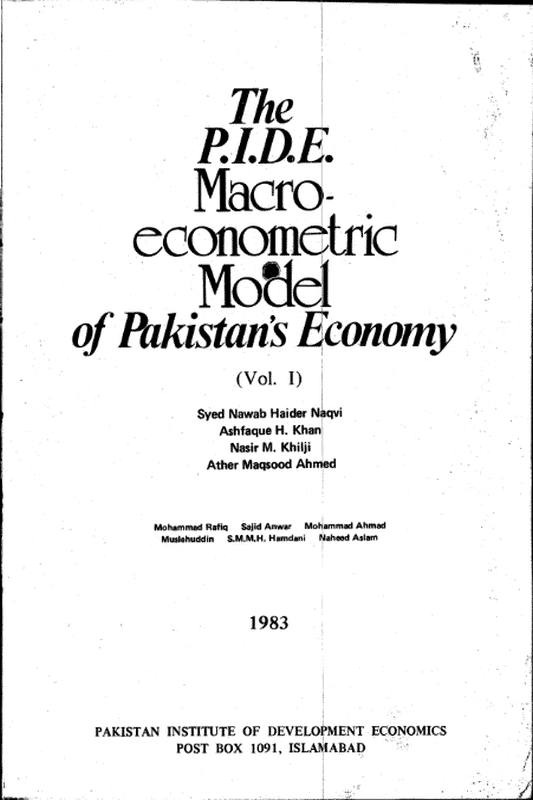
Pakistan Institute of Development Economics
- Home
Our Portals
MenuMenuMenuMenuMenuMenuMenu - ResearchMenuMenuMenuMenuMenuMenuMenu
- Discourse
- The PDR
- Our Researchers
- Academics
- Degree Verification
- Thesis Portal
- Our Portals
The PIDE Macro Econometric Model of Pakistan’s Economy Vol 1
To begin with, the PIDE Model (1982) was an interim report on an on-going project. To ‘see’ things more clearly, further experimentation was required with the specifications used in the model. As usually happens, these experiments necessitated a re-specification of several equations of the model. Secondly, much has been learnt from the first attempt. The publication of the model evoked considerable response from many scholars, who generously offered extremely valuable comments and suggestions. Most of the suggestions made by them necessitated further revisions of that model. Thirdly, the PIDE Model (1982) was restricted only to a structural analysis of Pakistan’s economy. No attempt was made at that time to ‘validate’ the estimated equations through historical ‘simulations’, partly because the PIDE model builders had just begun their slalom on the learning curve. Also, no sensitivity analysis was done to test the ‘stability’ of the estimated equations of the model. It is well known that even if equations perform well individually, they may ‘misbehave’ when allowed to ‘mix’ freely with other equations in the model, since errors then begin to build up. With the passing of the ‘age of innocence’, our horizons are now wider: besides structural analysis, we have attempted policy simulations and forecasting to push ahead with our exploration into the inadequately known and altogether unknown facts about Pakistan’s economy. Fourthly, there was an element of artificiality in restricting ourselves in the PIDE Model (I 982) to only log-linear forms of equation and in expressing all the endogenous variables in ‘real’ terms. These restrictions have now been removed.



